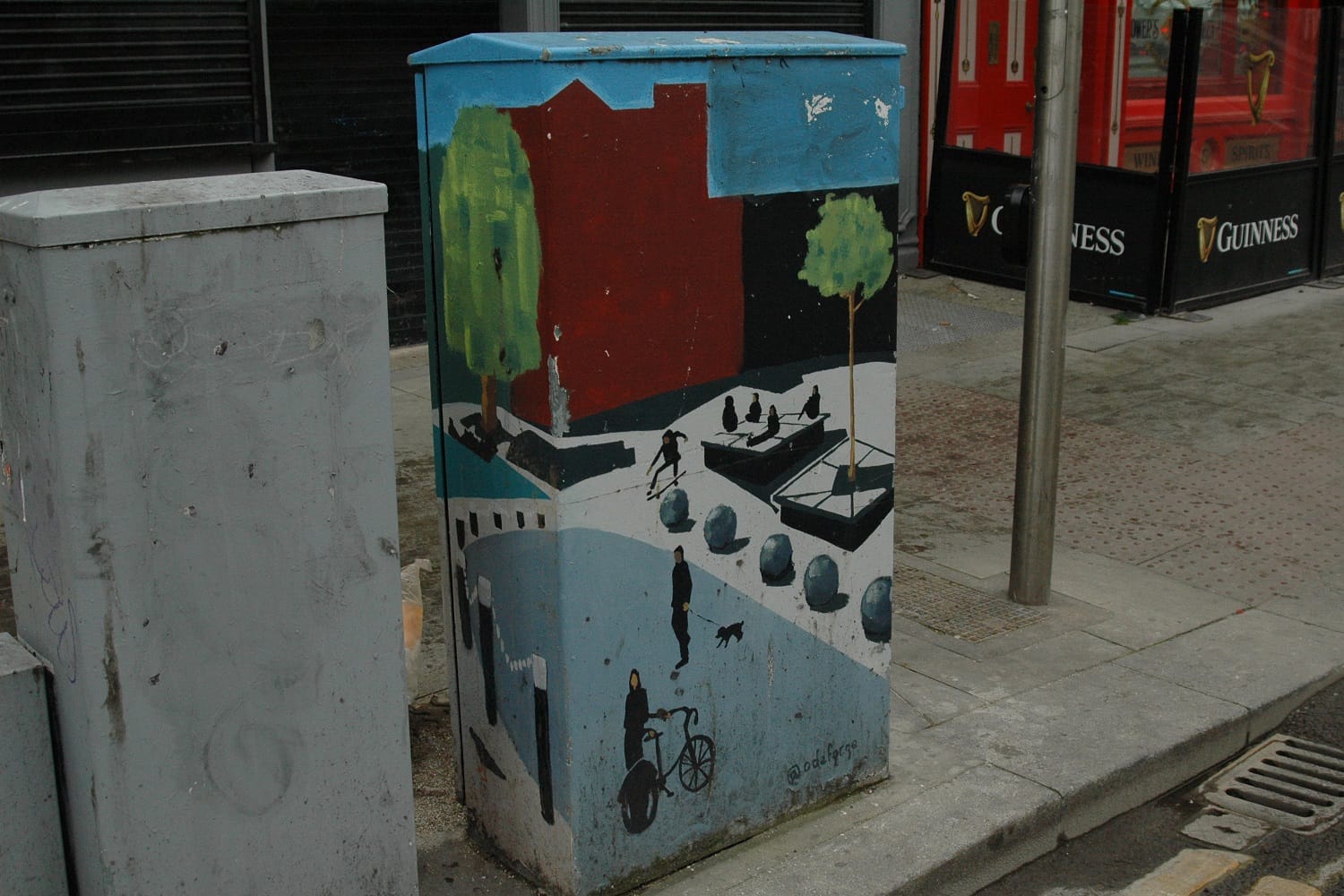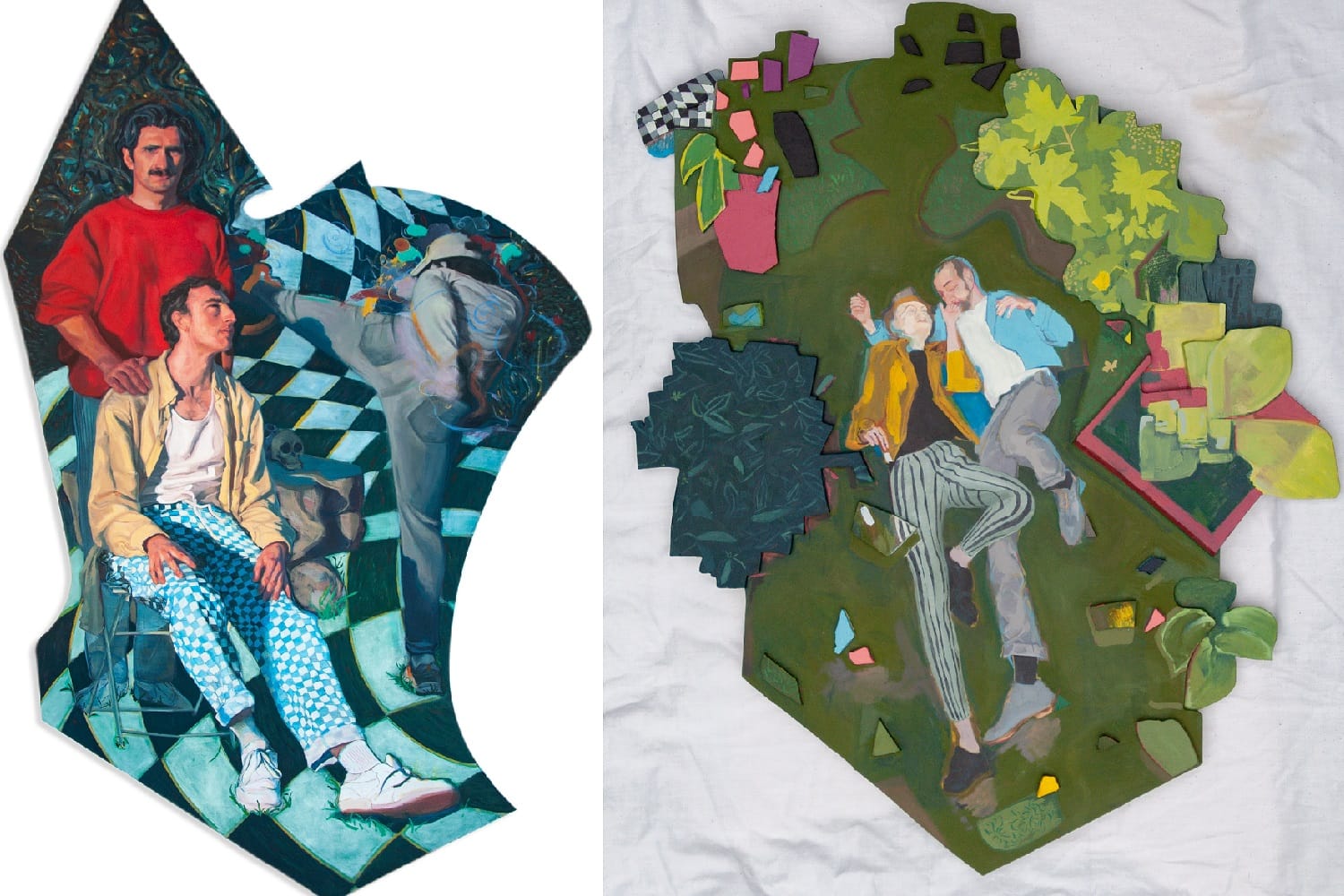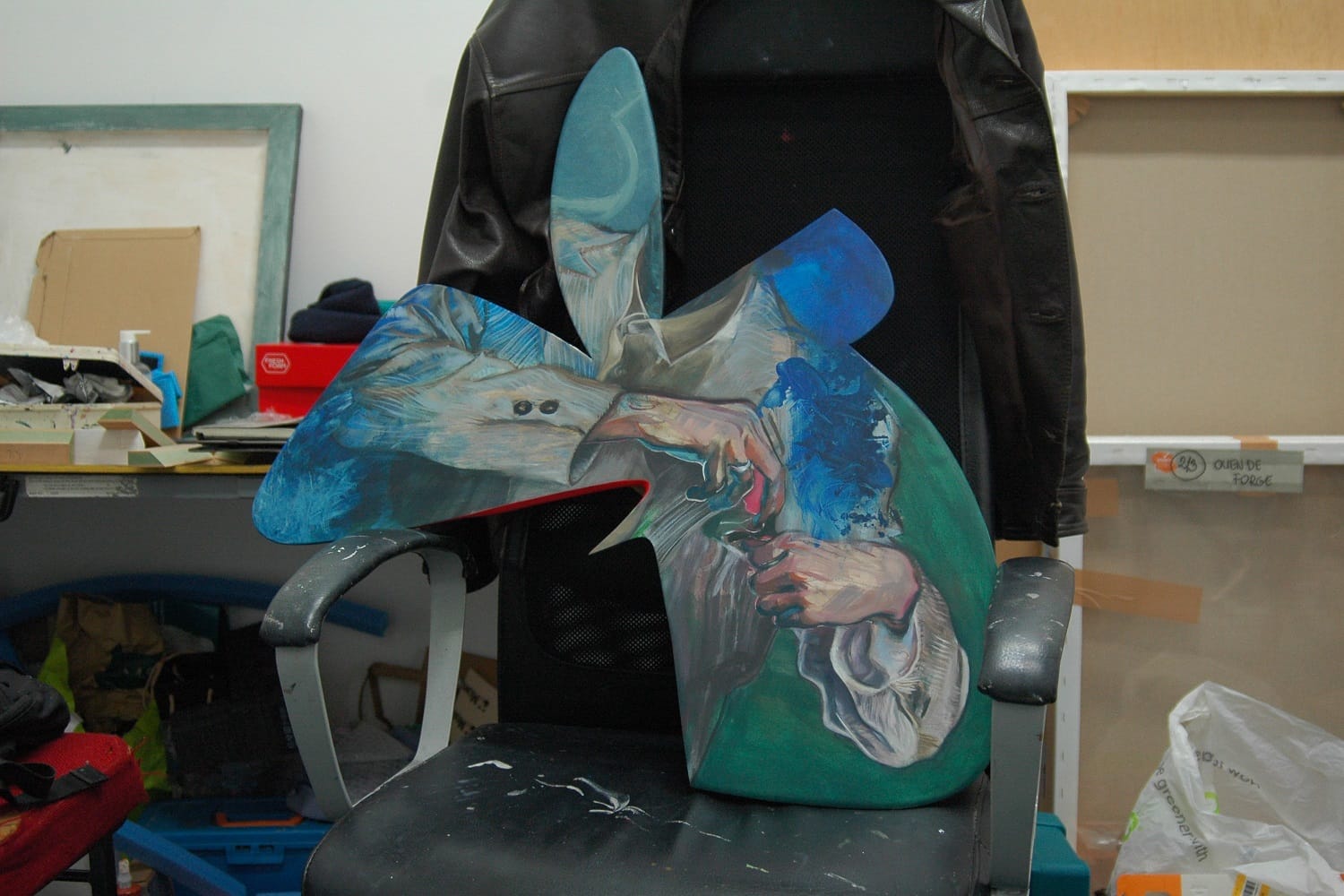What’s the best way to tell area residents about plans for a new asylum shelter nearby?
The government should tell communities directly about plans for new asylum shelters, some activists and politicians say.
“I just paint what catches my attention, and that is compelling to me, and that beg to be painted,” he says.

At around 11am last Saturday, Owen de Forge spotted a Eurasian otter by the Robert Emmet Bridge in Harold’s Cross.
It wriggled in the grass beside some early blooming daffodils. And for about ten minutes, the artist hung around on the outer edge of the Grand Canal, watching.
From across the waterway, he filmed the furry brown creature as it brushed its head against one of the greener patches of the southern bank, and paused here and there to inspect its surroundings.
The river otter appeared to claim as its home an artificial waterway, in which its population was so slight as to be scarcely acknowledged in the more recent city otter survey.
It’s the kind of rare sighting that de Forge delights in witnessing, and delights in capturing in his art.
De Forge favours painting subjects captured in split seconds of solitude and togetherness.
He often depicts friends, family and pets outdoors, basking in natural or semi-natural environments. The scenes are taken from everyday life. But, upon closer inspection, they slip out of normality.
The grass waves in fluid motion. The clouds in the sky resemble cartoons. The scenes escape into a dream-like state, unbeknownst to his subjects.
De Forge is attracted to the moments that are commonplace but taken for granted, he says, later that evening while walking along the canal. “It’s like honouring quiet moments that just feel right.”
It was after 4pm when de Forge wheeled his bicycle around the corner from Camden Street onto Portobello Harbour.
Bound for Inchicore, he suggested a scenic route along the locks. “There might be an otter family?”
Pairs of cygnets swam up the waterway, bobbing their heads. A group of boys sold sweets and cans of Coke from a stall outside a nearby cafe.
Wooden hoardings, decorated in murals of the local wildlife, cordoned off much of the plaza, where a hotel is under construction.
De Forge, who grew up in Rathmines, says he skated on the square for years. “As I was coming up here, I was just remembering, ‘Oh yeah, Portobello Plaza is actually a public square,’ and we have to keep reminding ourselves of that.”
Portobello and its skateboarding culture served a dual role as he developed as a painter, acting as both a subject and medium.
He illustrated and painted skaters, created abstract designs for his boards using grip tape, and in 2019, depicted the plaza as an idyllic shared space on traffic-light control boxes around the corner on Richmond Street.
Creating works on atypical surfaces à la a skateboard deck or a power box foreshadowed an idea he would develop towards the end of 2019 and into 2020.

These days, de Forge doesn’t use straightforward canvases for his works. He prefers ad-hoc irregularly shaped wooden boards, some layered, some cut into fragments.
In the back garden of his family home in Rathmines, he has repurposed a large shed as a woodworking shop, where he can take a jigsaw to boards on an old broken marble table.
De Forge was awakened to the possibility of using non-rectangular shapes by artists such as David Hockney, he says. “With rectangular shapes, I felt a bit constrained.”
“But this made me realise it could be a really, really useful, powerful way to echo forms that appear in nature, and to create shapes that resonate with what I see,” he says.
As filmmaker Conor Donoghue speaks over the phone, he is staring at one of de Forge’s oil-on-board pieces hanging on the wall in their living room, titled, On the Garden Floor.
It is a view from the sky of two figures lying together on a stretch of grass. De Forge painted the scene onto a jagged, loosely hexagonal board.
The framing compounds a feeling of intimacy as one of the characters rests their arm underneath the other, and separates them from the concerns of the outside world.
The surrounding vegetation is almost cubist. Scattered across the grass are haphazard triangles and rectangles, pink, blue and yellow.
It exists in this enigmatic textural space, says Donoghue. “It’s so visually pleasing. But I don’t know how to put it into words. You get lost looking into its details.”

Donoghue crops up in several of De Forge’s figurative paintings. One is a group portrait staged beside the Knockmaree Dolmen in the Phoenix Park.
Titled Dolmen Dream, the work bears a slight resemblance to a family portrait.
Donoghue is seated on a chair by the 5,000-year-old landmark. Their friend Ronan stands above him, resting his hand on Donoghue’s shoulders. Another friend, musician Jake Hurley, known otherwise as Local Boy, performs a karate kick close by.
“De Forge is a big dolmen appreciator,” says Hurley. “And he got us into the dolmen lifestyle.”
Blades of grass only appear around the feet of the three subjects. A warping black-and-white checked floor obscures the greenery. Abstract swirls and circles surround the standing subjects. On the dolmen itself is a human skull.
Setting realistic figures against an unreal background intrigues Donoghue, he says. “There are multiple techniques in it with this almost animation style in there too.”
Hurley, the musician, says he admires the focus on detail, whether in the dreamier sections or the creases in clothing.
“But it’s the element of mystery that is pretty enticing,” says Hurley, who has De Forge design the artwork for the Local Boy albums, EPs and singles.
“I think I have asked a couple of times, ‘What does it mean?’” Donoghue says, laughing. “But he doesn’t really explain it. Which is good.”
De Forge wheels his bicycle along a series of garden allotments spread across the grassy bank between the canal and a row of terraced houses on Lullymore Terrace.
Photorealism in painting doesn’t appeal to him, he says.
Having studied animation, he was drawn to films such as The Triplets of Belleville, primarily for the heightened and exaggerated forms of the characters, he says. “It is pseudo-realistic for comedic or poignant effect.”
In his own work, he layers surrealism and photographic references as a way to build on what was present by adding what could be there, he says.
“The photo itself is never enough. There’s something in my mind which comes from reading the photo, and that appears when I close my eyes, or triggers a memory,” he says.

“While I’m painting, I want to allow sort of weird and spontaneous ideas to emerge, be they abstract or something suited to my own feelings,” he says.
Using ad-hoc boards as canvasses ties into this desire to escape objectivity, he says. “It makes clear there is a bias, a decision to include certain things or exclude others.”
Close to the Dolphin’s Barn fire station on Parnell Road, De Forge pauses upon crossing Camac Bridge.
Turning back in the direction of Harold’s Cross, he proposes descending down onto the walkway by the canal. “We should do a bit of otter searching down here,” he says.
At the scene of the original otter, beside the Robert Emmet Bridge, he sits on a wall, across the water from a group of pigeons picking at a spilled tub of yellow rice. Beneath the bridge, a line of rocks is mounted into the cement in a static flock.
He whipped a camera out of his bag to photograph the secluded spot beneath the bridge as a bus rumbled by.
Between snaps, he brought up plans for his upcoming solo exhibition, which takes place at Dean Art Studios in May, he says.
For that, rather than telling a story deliberately, he plans to assemble images from his day-to-day life, he says, and let a narrative emerge. “The selection says something about me, where I live and the people in my life.”
He is hesitant to draw a line around what the exhibition means and offer up a clean explanation, he says. “I used to try not to tell a story and close off my own narrative to just let things be. But I just began to realise that people need stories, even if they are false to a certain extent.”
“I just paint what catches my attention, and that is compelling to me, and that beg to be painted,” he says. “You keep your eyes open, and just wait for things to happen. That’s what does it for me.”
Get our latest headlines in one of them, and recommendations for things to do in Dublin in the other.